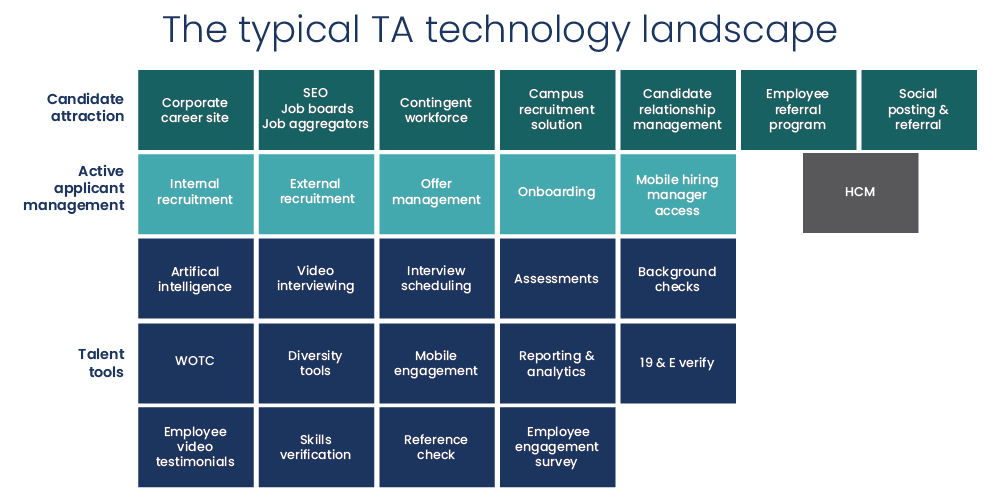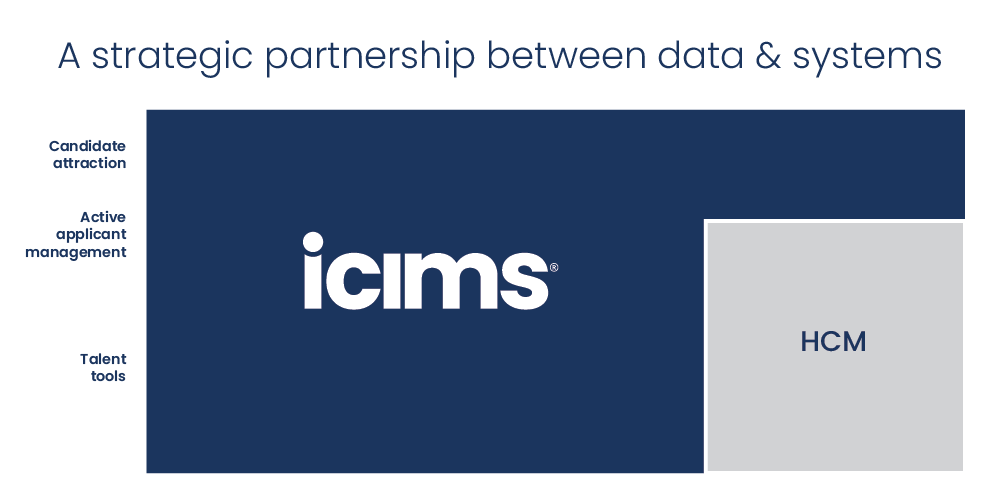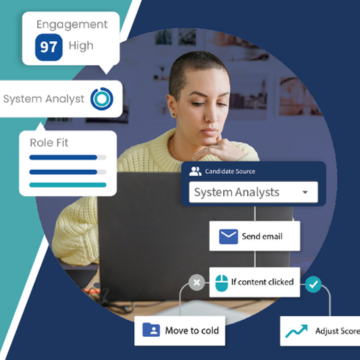- Solutions
- Products
- Community
- Resources
- Company
Create incredible candidate experiences that communicate your brand, mission, and values with recruitment marketing solutions.
Learn moreCommunicate effectively and efficiently with the candidates that can drive your business forward.
Learn moreSelect the right candidates to drive your business forward and simplify how you build winning, diverse teams.
Learn moreHelp your best internal talent connect to better opportunities and see new potential across your entire organisation.
Learn moreCommunicate collectively with large groups of candidates and effectively tackle surges in hiring capacity.
Learn moreAccess tools that help your team create a more inclusive culture and propel your DEI program forward.
Learn moreRebound and respond to the new normal of retail with hiring systems that are agile enough to help you forge ahead.
Learn moreAccelerate the hiring of key talent to deliver point of care and support services that meet and exceed your promise of patient satisfaction.
Learn moreAttract and engage candidates with technical competencies, accelerate hiring for much-needed skills, and advance expertise within your valued workforce.
Learn moreSimplify how you recruit finance, insurance, and banking candidates with a unified platform built to match top talent with hard-to-fill roles.
Learn moreYour business strategy depends on your people strategy. Keep both in lockstep with the iCIMS Talent Cloud.
Learn moreBuild an engaging, high-converting talent pipeline that moves your business forward.
Learn moreDeliver the innovation your talent team needs, along with the global scale and security you demand.
Learn moreDeliver tailored technology experiences that delight users and power your talent transformation with the iCIMS Talent Cloud.
Learn moreThe #1 ATS in market share, our cloud-based recruiting software is built for both commercial and large, global employers.
Learn more Talk to salesAttract the best talent for your business with powerful, on-brand career websites that excite candidates and drive engagement.
Learn more Talk to salesCombine behavior-based marketing automation with AI insights to build talent pipelines, engage candidates with multi-channel marketing campaigns, and automatically surface the right talent for the job.
Learn more Talk to salesEmpower candidates with automated self-service, qualification screening, and interview scheduling through an AI-enabled digital assistant.
Learn more Talk to salesSimplify employee onboarding with automated processes that maximize engagement and accelerate productivity.
Learn more Talk to salesRecruit in the modern world and expand your reach with built-in virtual interviewing.
Learn more Talk to SalesFocus on qualifying candidates faster with fully integrated language assessments.
Learn more Talk to SalesImprove employee experience, retention, and reduce internal talent mobility friction with the iCIMS Opportunity Marketplace.
Learn more Talk to salesCompliment your sourcing and engagement efforts with sophisticated lead scoring and advanced campaign personalization.
Learn more Talk to salesModernize, streamline, and accelerate your communication with candidates and employees.
Learn more Talk to salesTransform the talent experience by showcasing your authentic employer brand through employee-generated video testimonials.
Learn more Talk to salesGive your business a competitive edge with a complete solution for creating personalized, timely, and accurate digital offer letters that inspire candidates to want to join your team.
Learn more Talk to SalesSimplify recruiting, dynamically engage talent, and reduce hiring bias with job matching and recruiting chatbot technology.
Learn more Talk to salesThe #1 ATS in market share, our cloud-based recruiting software is built for both commercial and large, global employers.
Learn more Talk to salesAttract the best talent for your business with powerful, on-brand career websites that excite candidates and drive engagement.
Learn more Talk to salesCombine behavior-based marketing automation with AI insights to build talent pipelines, engage candidates with multi-channel marketing campaigns, and automatically surface the right talent for the job.
Learn more Talk to salesEmpower candidates with automated self-service, qualification screening, and interview scheduling through an AI-enabled digital assistant.
Learn more Talk to salesSimplify employee onboarding with automated processes that maximize engagement and accelerate productivity.
Learn more Talk to salesCompliment your sourcing and engagement efforts with award-winning lead scoring and advanced campaign personalization.
Learn moreImprove employee experience, retention, and reduce internal talent mobility friction with the iCIMS Opportunity Marketplace.
Learn more Talk to salesModernise, streamline, and accelerate your communication with candidates and personnel.
Learn more Talk to salesTransform the talent experience by showcasing your authentic employer brand through employee-generated video testimonials.
Learn more Talk to salesSimplify recruiting, dynamically engage talent, and reduce hiring bias with job matching and recruiting chatbot technology.
Learn more Talk to salesHow PRMG attracts 50% more applicants for niche finance roles with the iCIMS Talent Cloud.
Learn moreThousands strong, our global community of talent professionals includes creatives, innovators, visionaries, and experts.
Learn moreTogether we’re creating the world’s largest ecosystem of integrated recruiting technologies.
Learn morePartner with our global professional services team to develop a winning strategy, build your team and manage change.
Learn moreExplore our network of more than 300 certified, trusted third-party service and advisory partners.
Learn moreExpert guidance about recruitment solutions, changes in the industry, and the future of talent.
Learn moreExpert guidance about recruitment solutions, changes in the industry, and the future of talent.
Learn moreStay up to date with the latest terminology and verbiage in the HR software ecosystem.
Learn morePartner with iCIMS to build the right strategies, processes, and experience to build a winning workforce.
Learn moreThe iCIMS Talent Cloud delivers a secure, agile, and compliant platform designed to empower talent teams, job seekers, and partners with advanced data protection and privacy.
Learn moreWatch the recording of our latest webinar looking at key findings from a recent study and explore short-term and long-term solutions for the talent crisis in 2022 and beyond.
Watch on-demandView press releases, media coverage, and the latest hiring data. See what analysts are saying about iCIMS.
Learn moreiCIMS is the Talent Cloud company that empowers organizations to attract, engage, hire, and advance the talent that builds a winning workforce.
Learn moreGet to know the award-winning leadership team shaping the future of the recruiting software industry.
Learn moreWe believe the future of work isn't something that "happens" to you. It's something you create. We actively create the future of work with our customers every day.
Learn moreStreamline your tech stack and take advantage of a better user experience and stronger data governance with ADP and the iCIMS Talent Cloud.
Learn moreThe combined power of iCIMS and Infor helps organizations strategically align their business and talent objectives.
Learn moreOur award-winning partnership with Microsoft is grounded in a shared desire to transform the workplace and the hiring team experience.
Learn moreOur partnership with Ultimate Kronos Group (UKG) supports the entire talent lifecycle by bringing frictionless recruiting solutions to UKG Pro Onboarding.
Learn moreLet’s get in touch. Reach out to learn more about iCIMS products and services.
Learn more
When recruiters have an open role to fill, they can’t sacrifice quality for speed. This conundrum leaves recruiters with a challenge: Find strong candidates, and find them fast.
To meet this goal, recruiters (and sometimes that means store or restaurant managers who also hire) need to source, screen and interview applicants. Then they need to choose the winning candidate, offer the job and onboard the new employee — assuming the candidate takes the gig.
With so much to accomplish, recruiters need tools that help them bring the best talent on board — and that are mobile and easy to use so hiring managers will be quick to adopt. Today’s tech solutions abound, leaving organizations to sort through the many options to find what suits their needs — and their budget. One of the most common of these solutions is the human capital management system.
What is an HCM? The human capital management system (HCM) is lauded as the tool that does it all: It promises to manage compensation, benefits and case management, as well as recruiting, hiring and retention.
An HCM certainly does a lot, but it doesn’t necessarily do all of it well. An HCM makes payroll and benefits a breeze. But it hamstrings recruiting. Recruiting is too important, complicated and fast-paced to be shoehorned in. Employers who depend on their HCM for recruiting are entrusting a tool that isn’t dedicated to talent acquisition. As a result, they lose candidates. They frustrate recruiters. And they end up buying add-ons that ease —

Organizations frustrated or alarmed by these issues should consider an applicant tracking system.
What is an ATS? An applicant tracking system, or ATS, is a unified software program dedicated to a company’s recruitment needs. An ATS allows an organization to collect and store candidate and job-related data. It enables recruiters to track and monitor the progress of candidates through all stages of the hiring process.
Applicant tracking systems don’t just replace outdated methods of attracting and managing job applications. When they’re paired with a robust all-in-one hiring platform, they enhance the entire process from end to end: From the candidate applying for the job to the recruiter searching for the future employee.
Employers can depend on an ATS to:
It’s vital to give recruiters the tools they need. When TA pros use tools made for recruiting — and recruiting alone — they’re enabled to hire and retain a transformative workforce. What’s more, the tools keep up with industry trends and tech innovations.
As we explore the benefits an ATS provides, keep this in mind: An HCM hurts the candidate experience and frustrates recruiters and managers. In contrast, an ATS enhances the candidate experience and helps recruiters work smarter. These improvements translate to many tangible results, but none so as obvious or impactful as improved talent acquisition.

The goal of recruiting is to transform the best candidates into employees. Any issues within the recruiting process, then, thwart that goal. These issues may range from small frustrations like endless emailing to major blunders like bad communication.
HCMs lose promising candidates. When employers count on HCMs to carry recruiting, they put candidate relationships at risk with:
Employers may be tempted to adopt an HCM when they hear that it does it all. But HCMs trade breadth for excellence, and the candidate experience suffers as a result.
An ATS prioritizes the candidate experience. The system is built for job seekers, featuring:
The modern job seeker expects companies to offer a swift and satisfying hiring process. Using an ATS, companies ensure every applicant receives a timely response to their application and encounters a seamless experience with their potential employer.
The success of your talent acquisition program depends on your recruiters. With the wrong tools, recruiters are mired in resume-scanning, candidate-screening and scheduling. When recruiters are empowered by good tools, they can get strategic about TA. They can spend their time building talent pipelines, designing recruitment marketing plans and perfecting the company’s approach to onboarding.
HCMs frustrate recruiters. According to Gartner, HCM recruiting modules are the most used — yet also the most disliked — modules by recruiting teams. These platforms offer an all-in-one approach to HR (not talent acquisition). And while the solutions promise simplicity, they leave recruiters without the tools and information they need. Solutions like CRM, career sites, and text recruiting are rarely included by HCMs in their offerings. They may also lack connections between solutions across the platform and innovations to attract and engage talent.
Recruiters will miss what HCMs lack. And when they need to find solutions to bridge the gap between what they have and what they need, their organization will have two choices: Devote more spend to add-ons or give up on their recruiting goals.
iCIMS customer, NorthStar Anesthesia, agrees. Here’s what its director of provider integrations said:
iCIMS allows us a lot more flexibility overall and is much more user friendly. Pulling data out of our HCM was so difficult that we just could not get anything we needed in any useful format. None of this was possible with just an HCM.
ATS offers a better option. An ATS that’s part of an all-in-one talent platform is built specifically for recruiting (not HR processes like payroll). It equips talent acquisition specialists with the tools they need to find good candidates fast.
When employers choose an applicant tracking system that can scale, they invest in a platform built for candidates and recruiters. Candidates enjoy a simple, fast application process. And recruiters increase their efficiency to fill positions faster.
To learn how to build a business case for an all-in-one hiring platform, sign up for this webinar.

Alex is well-versed in content and digital marketing. He blends a passion for sharp, persuasive copy with creating intuitive user experiences on the web. A natural storyteller, Alex highlights customer successes and amplifies their best practices.
Alex earned his bachelor’s degree at Fairleigh Dickinson University before pursuing his master’s at Montclair State University. When not at work, Alex enjoys hiking, studying history and homebrewing beer.




